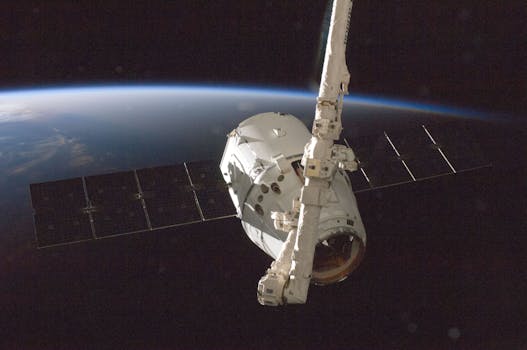
LEO Satellites: The Future of Global Connectivity
LEO satellites, or Low Earth Orbit satellites, are revolutionizing the way we communicate and access information. With their ability to provide high-speed, low-latency connectivity, LEO satellites are transforming the world of telecommunications and beyond. In this article, we will delve into the world of LEO satellites, exploring their benefits, applications, and the impact they are having on our daily lives.
At the beginning of our discussion on LEO satellites, it is essential to understand the concept of satellite technology and its evolution over the years. Satellite technology has come a long way since the launch of the first artificial satellite, Sputnik, in 1957. Since then, satellites have been used for a variety of purposes, including communication, navigation, weather forecasting, and space exploration. However, traditional satellites have limitations, such as high latency and limited coverage, which have hindered their ability to provide seamless connectivity.
The Benefits of LEO Satellites

LEO satellites operate at an altitude of around 160 to 2,000 kilometers, which is much lower than traditional satellites. This lower altitude enables LEO satellites to provide several benefits, including reduced latency, increased bandwidth, and improved connectivity. With latency as low as 20-30 milliseconds, LEO satellites can provide real-time communication, making them ideal for applications such as video conferencing, online gaming, and remote healthcare.
Another significant advantage of LEO satellites is their ability to provide global coverage, including in remote and underserved areas. Traditional satellites often struggle to provide coverage in these areas due to their higher altitude and limited signal strength. LEO satellites, on the other hand, can provide reliable and high-speed connectivity, bridging the digital divide and enabling people in remote areas to access essential services such as education, healthcare, and financial services.
Applications of LEO Satellites

LEO satellites have a wide range of applications, including communication, navigation, Earth observation, and space exploration. In the field of communication, LEO satellites are being used to provide broadband internet services, including satellite-based internet services for consumers and businesses. Companies such as SpaceX, Amazon, and OneWeb are launching constellations of LEO satellites to provide global internet coverage.
In the field of navigation, LEO satellites are being used to provide location-based services, including GPS, GLONASS, and Galileo. These satellites enable accurate navigation and timing, which is essential for a wide range of applications, including aviation, maritime, and land transportation.
Challenges and Opportunities

While LEO satellites offer many benefits and opportunities, there are also challenges that need to be addressed. One of the significant challenges is the high cost of launching and maintaining a constellation of LEO satellites. However, companies such as SpaceX and Rocket Lab are working to reduce the cost of access to space, making it more feasible for companies to launch and operate LEO satellites.
Another challenge is the issue of space debris, which is a growing concern as the number of satellites in orbit increases. To address this issue, companies and regulatory bodies are working to develop guidelines and regulations for responsible satellite operations and disposal.
Conclusion

In conclusion, LEO satellites are revolutionizing the way we communicate and access information. With their ability to provide high-speed, low-latency connectivity, LEO satellites are transforming the world of telecommunications and beyond. As the technology continues to evolve, we can expect to see even more innovative applications and opportunities for LEO satellites.
See more:
